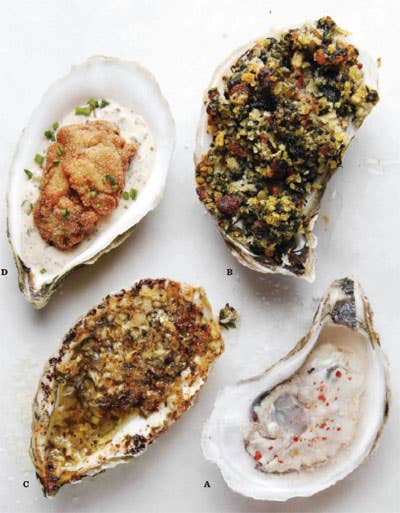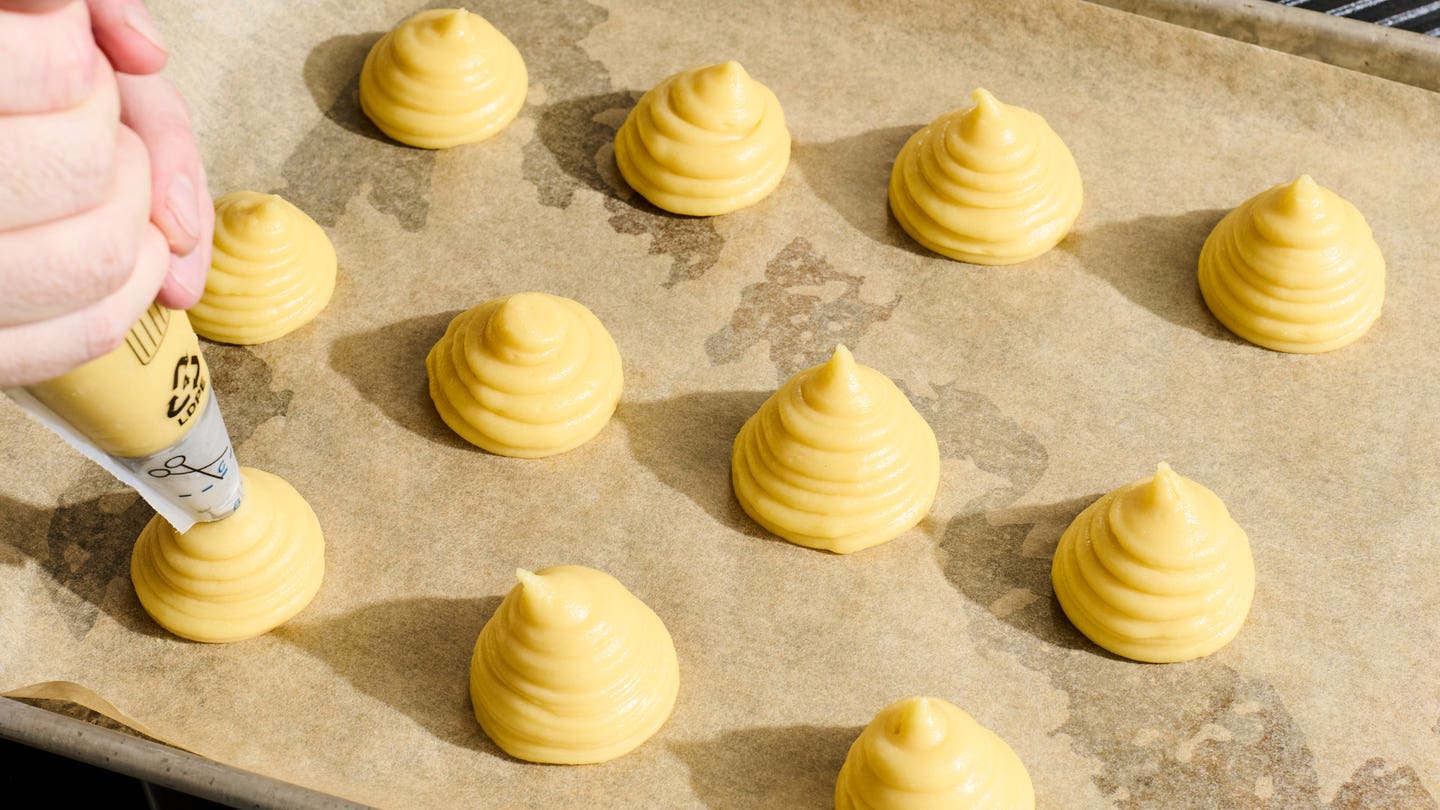
Oysters
I find oysters fascinating on many levels. When I was a child, they were exotic: for Thanksgiving, my mother, the best cook in our town of Cullman, Alabama, would make corn bread dressing full of sage, celery, mushrooms, and plump oysters, bound together with lots of butter—a dish that's luxurious and rustic at the same time. Sometimes she'd do an oyster pan roast with milk, cream, cayenne, and a bit of nutmeg, which had scalded oysters floating about. On trips to New Orleans, I made a ritual of going to places like Acme Oyster House and Casamento's. I'd try to chat with the oystermen behind the counter to find out what bays in Louisiana these plump, sweet oysters were from, and occasionally I'd get a straight answer.
When I started cooking, I became even more enamored. People have an almost ancient connection to this food. I love reading old cookbooks where you find the bivalves prepared every which way—baked, poached, scalded, fried—and the briny liquor used for making soup. I take inspiration from those cooks. I usually eat my oysters "naked" with a squeeze of lemon—or, if the oysters are "fresh" (too much freshwater and not enough saltwater), then I enjoy them with the classic French mignonette. But I'm always learning. I love good, creamy Oysters Rockefeller, and at my restaurant a regular customer introduced me to grilled oysters topped with cheese. I was suspicious of it at first, but it works really well, in a 1960s sort of way. And there's nothing like perfectly fried oysters—crisp and juicy morsels of, as the author Pat Conroy says, "the sea made flesh." —Frank Stitt, Highlands Bar and Grill, Birmingham, Alabama
Try oysters in these recipes, as pictured above:
A. Highlands Oyster Mignonette
B. Baked Oysters with Bacon and Spinach
C. Mobile-Style Oysters
D. Fried Oysters with Spicy Remoulade
Keep Reading
Continue to Next Story










